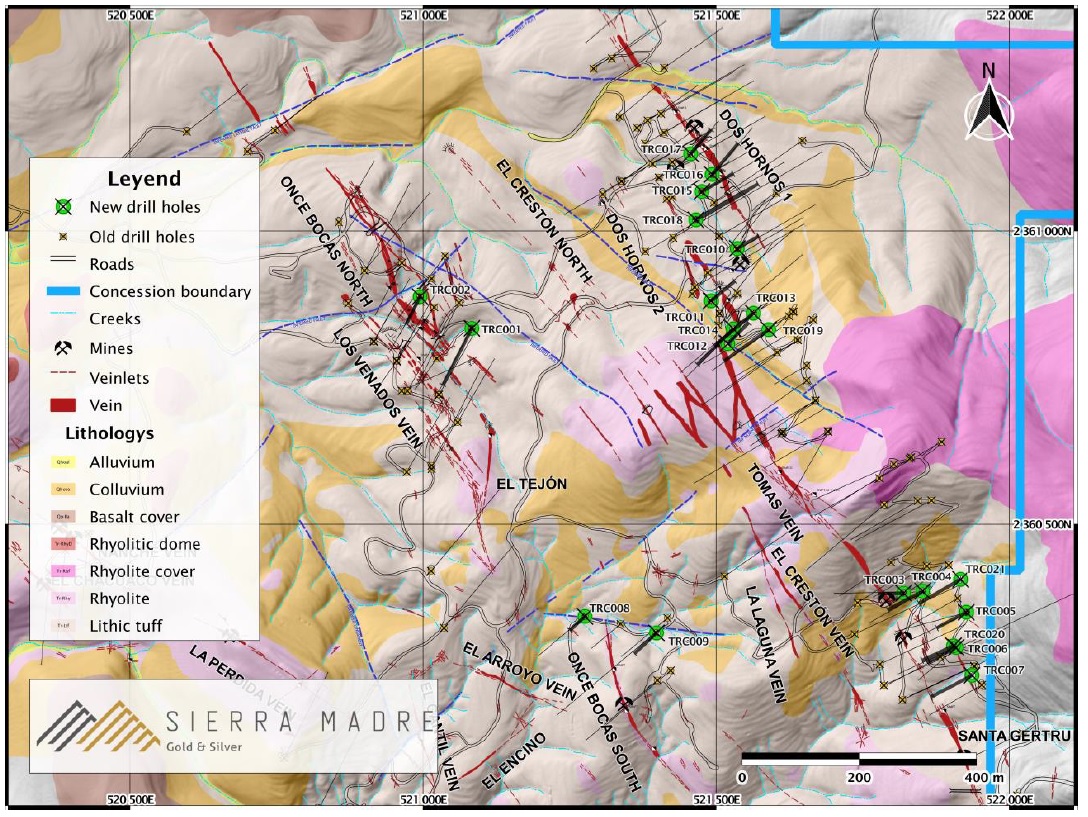
Sierra Madre Gold and Silver (SM.V) has released the assay results of its maiden drill program on the Tepic project. That maiden drill program consisted of 2,136 meters in 21 holes (for an average depth of about 100 meters per hole) and was mainly focusing on confirming the results of the previous operator of the project, as the previous drill program had issues recovering the core.
The Sierra Madre drill program has now successfully confirmed the presence and width of the mineralized veins (and the width may even be a bit wider than historically assumed), and this has increased the level of confidence in the available data from previous operators. Additionally, the Sierra Madre drilling discovered six new zones and we expect the Phase 2 drill program (which should start soon) to follow up on those new discoveries as well.
With a bunch of the intervals occurring close to surface, Sierra Madre is re-interpreting the project as a potential open pit project which would greatly reduce the operating cost per tonne. One potential explanation for this change of approach would be the fact the previous operator only shipped certain samples of the core to the labs. This means the previous owner did not submit the entire drill hole for analysis and Sierra’s current and upcoming drill programs will go a long way to fill in these ‘blanks’ that exist in the available data. This would further improve the odds of actually building an open pittable resource, and should have a positive impact on the average grade and strip ratio as well.
It’s still very early days for Sierra Madre Gold and Silver, but the initial results are very encouraging. And while that shouldn’t come as a surprise considering the company was trying to work off the basis provided by a previous operator, getting a better understanding of the mineralized system should make future exploration efforts more efficient.
Disclosure: The author has a long position in Sierra Madre. Sierra Madre is a sponsor of the website. Please read our disclaimer.

